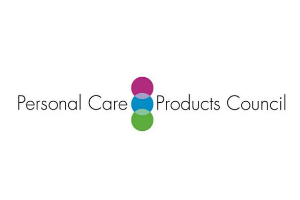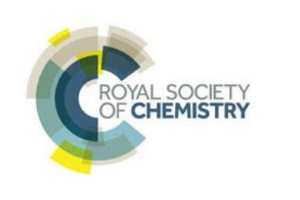Delphic HSE Support to COVID-19
Support area for COVID-19 virus outbreak.UPDATED: 31 MARCH 2020
Global Outbreak and Response
We are all in this together. In order to overcome this challenge, we will do what we can to help each other and where restrictions on competition and ‘knowledge’ must be placed to one side. At Delphic HSE, we have created a place on our website where we will upload information that may benefit companies that wish to place products on the market to reduce, stem or combat the COVID-19 outbreak. In our first ‘upload’, Delphic HSE offer some advice on Hand Sanitiser Legislation.
Hand Sanitiser Legislation
Depending on the intended countries of sale, Hand Sanitiser Products may be subject to different regulatory requirements and regimes. This can range from classification as a Cosmetic, through to a need to register such items as OTC Medicines, Non-prescription Drugs or Biocidal Products.
To help provide clients with an overview of the requirements in some major international markets, Delphic HSE is happy to provide the below information. We shall be continuing to review and update this information as regulations change (or are temporarily relaxed), as well as add further regions to the advice.
AUSTRALIA
Latest Updates
As of 28th March 2020, Australian Authorities have announced a temporary exclusion from the TGA Regulation for certain hand sanitiser formulations. Instead, products able to take advantage of these derogations will only be subject to regulation as general Consumer Goods.
The exempted formulations are based on World Health Organisation guidance, and follows similar announcements by the US FDA:
- Ethanol 80% v/v OR Isopropanol 75% v/v (Pharmacopoeial/Food Grades)
- Sterile Distilled Water or Boiled Cold Water
- Glycerol 1.45% v/v (Pharmacopoeial grade);
- Hydrogen peroxide 0.125% v/v (pharmacopoeial grade)
It must also be noted that such products must not contain any other active or inactive ingredients [including colours, fragrances or emollients].
Even with such derogations from the TGA Regulation, there are strict labelling requirements along with minimum standards for manufacturing and record keeping.
Within Australia an OTC Medicine Monograph outlines the requirements to market hand sanitisers through the New Medicine N2 Application process. At present the monograph covers the usage of ethanol (60% to 95% v/v), isopropyl alcohol (60% to 95% v/v), chlorhexidine gluconate (1% to 2% w/v) and triclosan (1% w/v) as individual active substances. It also permits the usage of ethanol and isopropyl alcohol (60% to 95% v/v total alcohol), ethanol and chlorhexidine gluconate (60% to 95% alcohol with 0.5% to 2% chlorhexidine gluconate) or isopropyl alcohol and chlorhexidine gluconate (60% to 95% alcohol with 0.5% to 2% chlorhexidine gluconate) as mixtures.
To be included in the Australian Register of Therapeutic Goods (ARTG), certain usage and labelling indications are permitted, including:
- Antiseptic hand rub/Hygienic hand rub/Healthcare personnel antiseptic hand rub
- Kills germs
- Broad spectrum
- Fast acting
- Legally required safety labeling determined by the product formulation/active ingredients.
It should be noted that all products require efficacy to be demonstrated by both in-vitro and in-vivo assays. For in-vitro testing either European Standard EN13727 or US FDA Final Monograph methodology should be followed. For the in-vivo testing either European Standard EN1500 or US FDA Final Monograph methodology should be followed.
Unfortunately, Delphic HSE are not able to directly assist with the registration and labelling requirements for such products destined to be sold in Australia at this time. Further information on requirements and registrations can be found through the Therapeutic Goods Administration website (https://www.tga.gov.au/otc-medicine-monograph-hand-sanitisers).
CANADA
Latest Updates
Health Canada has recently indicated it will temporarily waive some regulatory requirements (including labelling and potentially registration) for products that are approved in other jurisdictions with “similar regulatory frameworks and quality assurances.”
Companies wishing to take advantage of such temporary waivers, or wanting to know more about the registration process, should contact:
Natural and Non-prescription Health Products Directorate (hc.nnhpd-dpsnso.sc@canada.ca)
Alcohol-based Hand Sanitisers are generally regulated as Drugs within Canada, falling under the definition of products manufactured, sold or represented for use in the “mitigation or prevention of disease”. Indeed, there is a specific Non-prescription Drug, Category IV Monograph, that deals with the regulatory and safety requirements of Antiseptic Skin Cleansers for Personal Domestic Use.
This can be accessed through the Health Canada Website (http://webprod.hc-sc.gc.ca/nhpid-bdipsn/atReq.do?atid=antiseptic_antiseptique&lang=eng).
The Monograph specifically covers both Natural Health Product (NHP) items containing Ethyl Alcohol (60% to 80) or Isopropanol (60% to 70%) as well as Non-prescription Drug Medicinal Ingredients (such as Benzalkonium chloride, Chlorhexidine, Chloroxylenol and Triclosan).
At Delphic HSE our toxicologists are able to support companies with the Safety Testing and Data Requirements for such products. This includes the sourcing and review of data on irritation, sensitisation, photo-allergy and photo-genotoxicity to meet local tolerance Safety Requirements as well systemic toxicity data should it be required for ingredients subject to dermal absorption.
Delphic HSE are, unfortunately, not able to directly assist with the registration and labelling requirements for such products destined to be sold in Canada. It should, however, be noted that Health Canada has recently indicated it will temporarily waive some regulatory requirements (including labelling and potentially registration) for products that are approved in other jurisdictions with “similar regulatory frameworks and quality assurances.”
Companies wishing to take advantage of such temporary waivers, or wanting to know more about the registration process, should contact:
Natural and Non-prescription Health Products Directorate (hc.nnhpd-dpsnso.sc@canada.ca).
EUROPEAN UNION
Latest Updates
On March 24th 2020 the European Chemicals Agency (ECHA) issued a statement encouraging Member States to consider and accept applications for short-term derogations to hand sanitiser products (as allowed by Article 55 of the EU Biocidal Products Regulation in a case of threat to Public Health). Following this a number of EU Members States, including the UK, have already begun issuing such exemptions to applying companies.
These applications only apply to certain formulations, following the WHO or National Guidance on products based around Ethanol or Isopropanol. More information can be found through the ECHA Website https://echa.europa.eu/-/speeding-up-the-supply-of-disinfectants
A list of Member State Competent Authorities, to make applications for the National Authorisation derogations, can be found at https://echa.europa.eu/contacts-of-the-member-state-competent-authorities
Within the European Union (currently including the United Kingdom) it is possible for products to be classified as either Cosmetics or Biocidal Products depending upon the exact nature of a products labelling, claims and presentation. The current Borderline Products Manual simply states this to be the case, however previous European Commission documents have provided much more explicit guidance.
In particular Table 5 of the Notes for Guidance on the Borderline between the legislation for Cosmetics and Biocides (CA-Jul13-Doc.5.1.h) may be informative:
Table 5: Examples of presumed classification for hand and body leave-on cleaning products.
|
Labelled claim |
Presumed product classification and applicable legislation, based solely on the claim |
|
Hand cleaner |
Cosmetic – the function is in line with the definition and purpose served by a cosmetic product. The product will have to comply with the CPD and the CPR. |
|
Physically clean/visually clean |
Cosmetic – the function is in line with the definition and purpose of a cosmetic product with respect to cleaning and improving the appearance of the hands or body. The product will have to comply with the CPD and the CPR. |
|
Antibacterial |
Biocide – the product clearly makes a claim of human hygiene through skin disinfection, and hence a claim to protect public health through biocidal action. In this case, the biocidal function is likely to be considered as the main function to which the cosmetic function has become secondary. In consequence, the product would be excluded from the scope of the CPD/CPR, and would need to comply with the BPD and the BPR |
|
Kills a wide range of germs |
Biocide – the product clearly makes a claim of human hygiene through skin disinfection, and hence a claim to protect public health through biocidal action. In this case, the biocidal function is likely to be considered as the main function to which the cosmetic function has become secondary. In consequence, the product would be excluded from the scope of the CPD/CPR, and would need to comply with the BPD and the BPR |
|
Kill bacteria |
Biocide – the product clearly makes a claim of human hygiene through skin disinfection, and hence a claim to protect public health through biocidal action. In this case, the biocidal function is likely to be considered as the main function to which the cosmetic function has become secondary. In consequence, the product would be excluded from the scope of the CPD/CPR, and would need to comply with the BPD and the BPR |
|
Antiviral |
Biocide – the product clearly makes a claim of human hygiene through skin disinfection, and hence a claim to protect public health through biocidal action. In this case, the biocidal function is likely to be considered as the main function to which the cosmetic function has become secondary. In consequence, the product would be excluded from the scope of the CPD/CPR, and would need to comply with the BPD and the BPR |
|
Kills viruses Virokill |
Biocide – the product clearly makes a claim of human hygiene through skin disinfection, and hence a claim to protect public health through biocidal action. In this case, the biocidal function is likely to be considered as the main function to which the cosmetic function has become secondary. In consequence, the product would be excluded from the scope of the CPD/CPR, and would need to comply with the BPD and the BPR |
|
Hand/body santizer |
Biocide – the product clearly makes a claim of human hygiene through skin disinfection, and hence a claim to protect public health through biocidal action. In this case, the biocidal function is likely to be considered as the main function to which the cosmetic function has become secondary. In consequence, the product would be excluded from the scope of the CPD/CPR, and would need to comply with the BPD and the BPR |
|
Disinfection of hands/other body parts |
Biocide – the product clearly makes a claim of human hygiene through skin disinfection, and hence a claim to protect public health through biocidal action. In this case, the biocidal function is likely to be considered as the main function to which the cosmetic function has become secondary. In consequence, the product would be excluded from the scope of the CPD/CPR, and would need to comply with the BPD and the BPR |
|
Hygienically clean |
The product is presented with a function of cleaning. It should be assessed if the function ‘hygiene’ needs to be considered as biocidal. For leave-on products, it should be assessed if the claimed cleaning function is actually present. The term hygiene has a broad spectrum of meaning which range from simple cleanliness to disinfection, depending on the context in which it is used. In the context of cosmetics, the terms normally refers to ‘personal hygiene’. |
Source: European Commission, Directorate-General: Environment. Note for Guidance, Borderline between the legislation for Cosmetics and Biocides. Document: CA-Jul13-Doc.5.1.h
For clients wishing to sell products meeting a Cosmetic Definition, Delphic HSE are able to provide their usual range of Regulatory and Product Safety Services, including acting as a Third-party Responsible Person if required.
Unfortunately, Delphic HSE are not able to provide Regulatory Services for Biocidal Products. Such Biocidal Product Registrations are subject to extensive pre-market documentation and authorization processes, utilizing the EUs R4BP and IUCLID platforms and formats. Further information on these requirements can be found on the European Chemicals Agency Website (ECHA, https://echa.europa.eu/regulations/biocidal-products-regulation/understanding-bpr).
Delphic HSE can assist with some aspects of the Product Safety and Toxicological Data requirements for registration dossiers.
UNITED STATES
Latest Updates
Companies should be aware of the FDAs Temporary Policy on Hand Sanitiser Products; which aims to address the possible shortage of such products by permitting the sale of items without full registrations under certain conditions. In accordance with this Policy the FDA have indicated that they do not intend to take enforcement action against firms who market products under certain conditions, including formulating to a limited ingredient palette.
Like many countries this is based on WHO Guidance:
- USP Grade Ethanol at 80% v/v or Isopropanol at 75%
- Glycerol 1.45% v/v
- Hydrogen Peroxide 0.125% v/v
- Sterile Distilled Water.
[No other active or inactive ingredients are permitted]
Further information on the formulatory restrictions, along with the requirements on manufacturing practices, labelling and company registrations, can be found at https://www.fda.gov/media/136289/download.”
Within the United States of America (USA) a new ‘Final Rule’ to ensure the safety Hand Sanitisers was issued by the US FDA in April of 2019, which becomes enforceable from April this year (2020) (https://www.federalregister.gov/documents/2019/04/12/2019-06791/safety-and-effectiveness-of-consumer-antiseptic-rubs-topical-antimicrobial-drug-products-for). Under this legislation ‘consumer antiseptic products intended for use without water’ are regarded as Over-The-Counter (OTC) Medicines. At this time only 3 active ingredients are considered permitted; benzalkonium chloride, ethyl alcohol and isopropyl alcohol. In order to bring such a product to market it must be registered with the Food and Drug Administration (FDA), and the Company itself must also be registered with the FDA (to obtain a Labeler Code).
Delphic HSE are pleased to inform clients that we are able to assist them in bringing such products to market. In addition to our internal expert toxicological advice on product safety, we collaborate closely with a partner organization based in the United States to provide regulatory and labelling services for such products. Assuming all required information for registration is available, the Company Registration (if not already obtained) takes around 2 weeks and a Product Registration can take from 1 to 2 weeks.
Companies should also be aware of the FDAs Temporary Policy on Hand Sanitiser Products; which aims to address the possible shortage of such products by permitting the sale of items without full registrations under certain conditions. In accordance with this Policy the FDA have indicated that they do not intend to take enforcement action against firms who market products under certain conditions, including formulating to a limited ingredient palette (USP Grade Ethanol at 80% v/v or Isopropanol at 75%, Glycerol 1.45% v/v, Hydrogen Peroxide 0.125% v/v and sterile distilled water). Further information on the formulatory restrictions, along with the requirements on manufacturing practices, labelling and company registrations, can be found at https://www.fda.gov/media/136289/download.”
Speak to a Delphic HSE Expert today
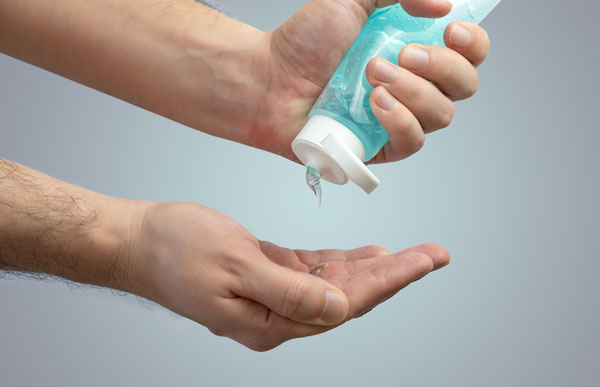
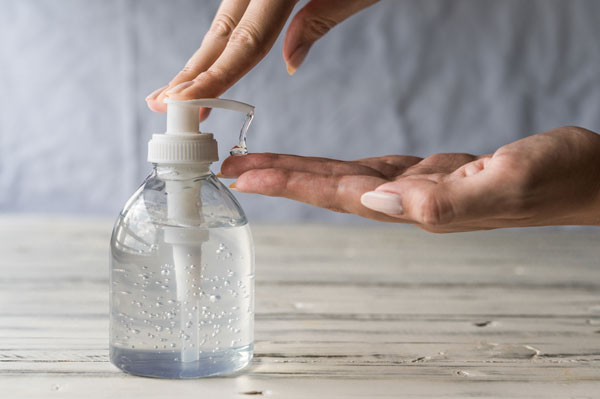
We're here to help

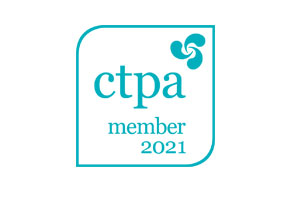
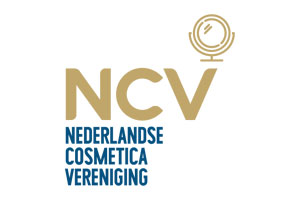
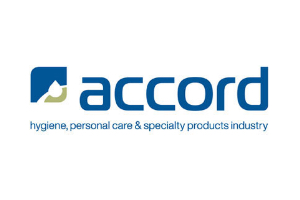
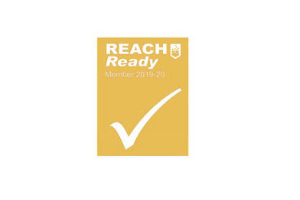

Delphic HSE is proud to be Cyber Essentials Plus certified.
